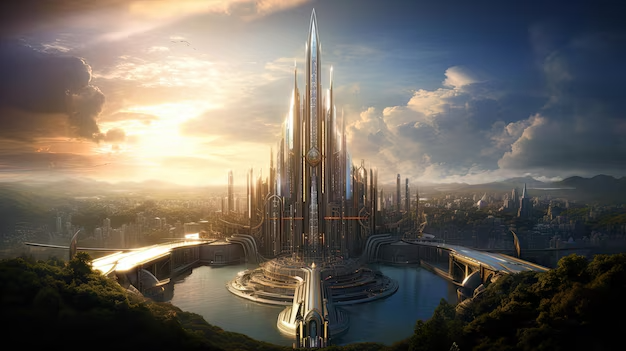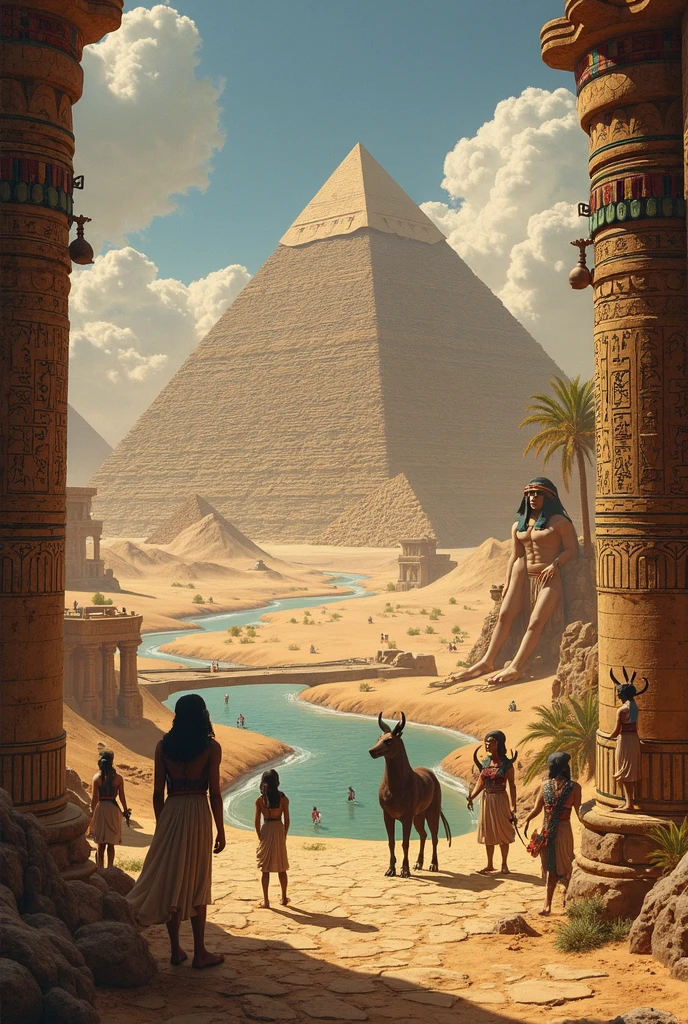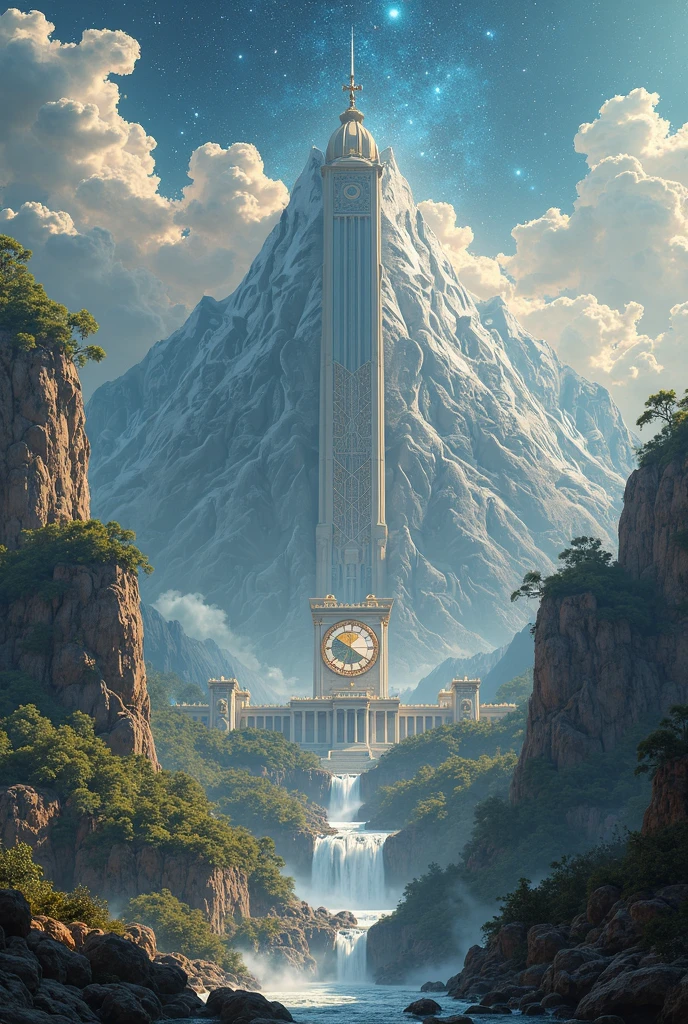Dogon Mythology: The Cosmic Legacy of the Nommo
The Dogon people of Mali possess one of the most intricate and enigmatic mythologies in Africa. Central to their beliefs is the figure of the Nommo, amphibious beings who descended from the stars and brought wisdom to humanity. Their cosmology, deeply tied to the star Sirius, reveals a profound understanding of astronomy that has fascinated scholars for decades.
The Nommo: Divine Beings of Water and Creation
In Dogon mythology, the Nommo are revered as ancestral spirits or gods who played a pivotal role in the creation of the world. These beings are described as half-human, half-fish creatures associated with water, fertility, and cosmic order. According to legend, the Nommo arrived from the Sirius star system in a great ark, bringing with them the knowledge of agriculture, language, and social structures.
- Origin: The Nommo are said to have emerged from the cosmic egg, created by the supreme god Amma.
- Appearance: They are depicted with human torsos and fish-like tails, symbolizing their connection to water and the heavens.
- Role: They served as teachers, civilizing humanity and establishing moral codes.
The Sirius Connection
The Dogon people’s knowledge of the Sirius star system has baffled astronomers. They describe Sirius as a binary star system (Sirius A and Sirius B) long before modern telescopes confirmed its existence. This has led to debates about how the Dogon acquired such precise astronomical knowledge.
| Dogon Concept | Astronomical Equivalent |
|---|---|
| Po Tolo (Sirius B) | A dense white dwarf star invisible to the naked eye |
| Emme Ya | A hypothetical third star in the Sirius system (unconfirmed) |
The Creation Myth of the Dogon
The Dogon creation story begins with Amma, the supreme deity, who shaped the universe from a primordial seed. The Nommo were his first creations, intended to bring balance to the world. However, a rebellion led by one of the Nommo, Ogo, disrupted this harmony, leading to a great flood. The surviving Nommo then restored order, teaching humanity the secrets of survival and spirituality.
Key Elements of Dogon Cosmology
- Amma: The creator god who fashioned the cosmos.
- Ogo: A rebellious Nommo who sought independence, causing chaos.
- The Ark: The vessel used by the Nommo to descend to Earth.
- Water: A sacred element symbolizing life and purification.
Astronomy and the Dogon Calendar
The Dogon people’s advanced understanding of celestial bodies is reflected in their agricultural and ritual calendars. Their year is divided based on the movements of Sirius, which they associate with the Nommo and the cycles of water and fertility.
| Dogon Ritual | Astronomical Event |
|---|---|
| Sigui Ceremony | Celebrated every 60 years, marking Sirius’ orbital cycle |
| Yasigi Dance | Performed during the planting season, aligned with star positions |
The Nommo in Modern Interpretations
Scholars and enthusiasts have drawn parallels between the Nommo and other mythological figures, such as the Mesopotamian Oannes or even extraterrestrial theories. The Dogon’s detailed astronomical knowledge continues to inspire debates about ancient civilizations and lost wisdom.
For further reading on African mythology, visit Encyclopedia Britannica, or explore the cultural heritage of Mali’s Dogon people. For astronomical insights, check NASA’s official site.
Descubre más artículos fascinantes sobre mitología y cultura en nuestra web y síguenos en facebook.com/zatiandrops.
The Dogon and Their Sacred Geography
The Dogon people’s spiritual connection to the land is as profound as their celestial knowledge. Their villages, built along the Bandiangara Escarpment, are strategically placed to reflect cosmic alignments. The cliffs themselves are considered a physical manifestation of the Nommo’s ark, with certain rock formations symbolizing the vessel’s descent from Sirius.
- Togu Na: The communal meeting house, designed with eight pillars representing the original ancestors.
- Hogon’s Residence: The spiritual leader’s home, always positioned to face Sirius during its zenith.
- Sacred Caves: Storehouses of ancient artifacts and oral traditions, accessible only to initiates.
The Role of the Hogon
The Hogon is the highest spiritual authority in Dogon society, believed to channel the wisdom of the Nommo. Chosen for their purity, Hogons undergo rigorous initiation rites, including a 6-month isolation period. They wear white robes and are forbidden from cutting their hair or nails, symbolizing their connection to the primordial state of creation.
| Hogon’s Duties | Symbolism |
|---|---|
| Presiding over Sigui ceremonies | Ensuring cosmic harmony |
| Interpreting celestial omens | Mediating between humans and the Nommo |
The Dogon Language: A Lexicon of the Cosmos
The Dogon language, particularly its secret Sigi So dialect, encodes astronomical concepts. For example:
- “Sirius” is called “Sigi Tolo”, meaning “the star of the foundation.”
- “Nommo” translates to “the monitors” or “those who make drinkable,” referencing their control over water.
Linguists note that Sigi So contains phonetic clicks resembling ancient Egyptian, fueling theories about trans-Saharan cultural exchanges.
Dogon Art and Symbolism
Dogon artistry—carvings, masks, and textiles—serves as a visual language for their myths. Key motifs include:
| Symbol | Meaning |
|---|---|
| Kanaga Mask | Represents the Nommo’s cross-shaped ark |
| Double-Headed Serpent | Symbolizes the duality of creation and chaos |
The Dogon and Ancient Egypt: A Controversial Link
Some researchers propose that the Dogon and ancient Egyptians shared a common cosmological source. Parallels include:
- Both cultures venerated Sirius as central to their calendars.
- The Nommo resemble the Egyptian god Osiris, who also brought civilization after a flood.
- Dogon granaries mirror the design of Egyptian pyramids, aligning with cardinal points.
Critics argue these similarities are coincidental, but the debate underscores the Dogon’s enigmatic heritage.
Dogon Agricultural Rituals
Farming is intertwined with cosmology. Before planting, Dogon farmers perform the Bulō ritual, scattering seeds in patterns mimicking Sirius’ trajectory. They recognize 22 crop varieties, each linked to a star or planet.
The Dogon in Contemporary Anthropology
Modern studies focus on how the Dogon preserve their traditions amid globalization. Notably:
- Oral Tradition: Griots (storytellers) memorize 800-year-old genealogies verbatim.
- UNESCO Recognition: The Bandiangara Escarpment was designated a World Heritage Site in 1989.
For deeper insights, explore Smithsonian Magazine’s archives or the UNESCO World Heritage List. For comparative mythology, visit JSTOR’s academic database.
Descubre más artículos fascinantes sobre mitología y cultura en nuestra web y síguenos en facebook.com/zatiandrops.
The Dogon and Their Secret Societies
The Dogon social structure is deeply intertwined with their mythology through secret societies, which preserve esoteric knowledge passed down from the Nommo. These societies, such as the Awa and the Lebé, serve as custodians of rituals, astronomy, and healing practices.
- Awa Society: Focuses on funeral rites and mask dances, believed to guide souls back to Sirius.
- Lebé Cult: Dedicated to earth worship and agricultural fertility, linked to the primordial serpent Lebé.
- Binou Priests: Specialize in divination and interpreting celestial signs from the Nommo.
Initiation Rites and Knowledge Transmission
Dogon initiates undergo years of training, learning through oral traditions and symbolic carvings. Key stages include:
| Stage | Purpose |
|---|---|
| Dyougou (Childhood) | Basic myths and clan history |
| Imina (Adolescence) | Astronomy and Sirius lore |
| Ogo (Adulthood) | Secret dialects like Sigi So |
The Dogon’s Mathematical Precision
Beyond astronomy, the Dogon exhibit advanced mathematical knowledge, particularly in their architecture. Their granaries, for example, are built with precise geometric proportions reflecting cosmic principles:
- Circular Foundations: Symbolize the orbit of Sirius B.
- Four Stories: Represent the four elements (earth, water, air, fire) bestowed by the Nommo.
- 8-Pointed Roofs: Align with the eight original ancestors of Dogon lineage.
The Dogon Number System
Their base-60 counting system (shared with ancient Babylonians) aligns with the 60-year Sigui cycle. Key numbers include:
- 22: The number of major star systems in their cosmology.
- 266: Days in the Dogon ritual calendar, mirroring human gestation.
The Dogon and Water: A Sacred Element
Water, central to the Nommo’s identity, governs Dogon rituals. Annual Yurugu ceremonies reenact the primordial flood, with participants pouring libations into sacred wells believed to connect to Sirius’s “watery” star system.
| Water Ritual | Purpose |
|---|---|
| Dama | Purification of the village |
| Goru | Honoring the Nommo’s gift of rain |
The Legend of the Pale Fox
In contrast to the benevolent Nommo, the Pale Fox (Yurugu) embodies chaos. According to myth, this trickster figure stole seeds from Amma’s granary, scattering them to create the first droughts. Dogon diviners use fox footprints in sand to predict future events.
Dogon Influence on Modern Thought
The Dogon have inspired fields from astrobiology to Afrofuturism. Notable examples include:
- Robert Temple’s “The Sirius Mystery”: Speculates about extraterrestrial origins of Dogon knowledge.
- Jean Rouch’s Films: Documented Sigui ceremonies, preserving vanishing traditions.
- Marvel’s “Black Panther”: Fictional Wakanda draws on Dogon architecture and warrior societies.
Challenges to Preservation
Climate change and urbanization threaten Dogon heritage. Rising temperatures disrupt rain-dependent rituals, while younger generations migrate to cities. NGOs like the Dogon Cultural Preservation Project digitize oral histories and train locals in sustainable tourism.
For further exploration, see National Geographic’s Mali archives, Library of Congress ethnographic records, or Smithsonian African Art collections.
Descubre más artículos fascinantes sobre mitología y cultura en nuestra web y síguenos en facebook.com/zatiandrops.
The Dogon and Their Connection to Other African Mythologies
The Dogon share striking similarities with other African cosmologies, suggesting a broader network of ancient knowledge exchange. For instance, the Yoruba of Nigeria also revere amphibious deities like Olokun, while the Bambara of Mali describe a similar cosmic egg creation story.
| Culture | Parallel Concept | Connection to Dogon Beliefs |
|---|---|---|
| Yoruba | Olokun (water deity) | Like the Nommo, associated with creation and water |
| Bambara | Farro (cosmic serpent) | Resembles the Dogon’s Lebé serpent |
| Ancient Nubia | Apademak (lion-headed god) | Shares the Dogon’s lion symbolism in some rituals |
The Dogon and the Dog Star
While Sirius dominates Dogon astronomy, they also track other stars like Pleiades (called Topu Tolo), which marks their harvest season. This multi-star tracking system demonstrates their sophisticated celestial observation techniques.
Dogon Architecture: A Mirror of the Cosmos
The Dogon translate their cosmic understanding into physical structures. Their famous togu na (men’s meeting house) features:
- Thatched Roof: Represents the Milky Way
- Central Pillar: Symbolizes the axis mundi connecting Earth to Sirius
- Carved Doors: Depict the Nommo’s journey in sequential panels
The Granaries of Knowledge
Dogon granaries aren’t just food stores – they’re cosmological models. Each part corresponds to:
- Base: The earthly realm
- Middle Sections: The celestial spheres
- Top Opening: The gateway to the Sirius system
The Dogon’s Astronomical Instruments
Without telescopes, the Dogon developed unique observation tools:
| Tool | Function | Modern Equivalent |
|---|---|---|
| Shadow Stones | Track solstices and equinoxes | Stonehenge-like calendar |
| Star Windows | Small openings in buildings that align with specific stars | Primitive observatory |
The Sirius Observation Ritual
During Sirius’ heliacal rising, Dogon priests use a special observation hole in the Hogon’s residence. The star’s light striking a particular stone marks the new year, demonstrating their precise astronomical timing.
Dogon Music and Cosmic Vibration
Music plays a vital role in Dogon spirituality, believed to recreate the Nommo’s primordial vibrations. Their instruments include:
- Bamboo Flutes: Mimic the sound of the Nommo’s voice
- Drums: Represent the heartbeat of Amma’s creation
- Iron Bells: Used in Sirius rituals to “call down” celestial energy
The Song of the Stars
Dogon griots sing special star chants that encode astronomical data in their rhythms and lyrics. Some chants are said to be direct translations of the Nommo’s original teachings.
Dogon Textiles: Woven Astronomy
Traditional Dogon indigo cloth contains geometric patterns representing:
| Pattern | Celestial Meaning |
|---|---|
| Diamond shapes | The Nommo’s ark |
| Spiral motifs | Orbit of Sirius B |
| Checkerboards | The cosmic balance between Amma and Ogo |
For deeper exploration of African textiles, visit The Met Museum, or study comparative mythology at Harvard’s archives. For astronomical research, consult SETI Institute.
Descubre más artículos fascinantes sobre mitología y cultura en nuestra web y síguenos en facebook.com/zatiandrops.
The Dogon and Their Unique Calendar System
The Dogon calendar represents one of the most sophisticated timekeeping systems in traditional African cultures. Unlike Western calendars, it synchronizes agricultural, ritual, and astronomical cycles with remarkable precision.
| Calendar Type | Duration | Purpose |
|---|---|---|
| Agricultural Calendar | 12 lunar months | Guides planting and harvesting |
| Ritual Calendar | 266 days | Determines ceremony timing |
| Sirius Cycle | 60 years | Marks major Sigui celebrations |
The Five-Day Week
The Dogon week consists of five days, each associated with different elements and deities:
- Dyougou: Day of rest and purification
- Tomou: Market day and social gatherings
- Kile: Agricultural work day
- Nomo: Day dedicated to the Nommo
- Ogo: Day of potential chaos (named after the rebel)
Dogon Healing Practices and Cosmic Medicine
The Dogon approach to medicine combines herbal knowledge with cosmic principles. Their healers, called Binu Sohu, believe illnesses stem from disruptions in one’s celestial harmony.
- Star-Based Diagnosis: Certain ailments are linked to specific star positions
- Sacred Plants: 22 primary medicinal herbs, each associated with a star
- Water Therapy: Using blessed water from Nommo-associated springs
The Healing Mask Ritual
For serious illnesses, Dogon healers perform the Dama Nama ceremony wearing special masks that:
| Mask Type | Healing Purpose |
|---|---|
| Kanaga | Restores cosmic balance |
| Sirige | Connects patient to Sirius energy |
| Satimbe | Channels ancestral wisdom |
The Dogon Concept of the Soul
In Dogon cosmology, each person possesses multiple soul components that reflect their celestial origins:
- Kikinu: The earthly personality
- Nommo Ya: The divine spark from Sirius
- Puru: The ancestral memory
- Yurugu: The chaotic potential (must be balanced)
The Journey After Death
Dogon funerary rites guide the soul through a complex post-death journey that mirrors the Nommo’s original descent from Sirius. Key stages include:
- 40-day purification in water
- Astral travel through seven celestial spheres
- Final judgment before Amma
- Potential rebirth or joining the ancestors in Sirius
Dogon Influence on Modern Astronomy
Contemporary astronomers have found surprising correlations between Dogon star lore and modern discoveries:
| Dogan Concept | Modern Discovery | Year Confirmed |
|---|---|---|
| Sirius B’s density | White dwarf stars | 1862 |
| Jupiter’s moons | Galilean satellites | 1610 |
| Saturn’s rings | Ring system | 1655 |
Ongoing Research
Scientists continue to study how the Dogon developed such accurate astronomical knowledge without telescopes. Current theories include:
- Ancient observation techniques lost to other cultures
- Possible contact with early Mediterranean astronomers
- Preservation of knowledge from a more advanced ancient civilization
For more on African astronomical traditions, visit African Astronomical Society, explore cultural preservation at UNESCO, or read scientific analyses at Nature Journal.
Descubre más artículos fascinantes sobre mitología y cultura en nuestra web y síguenos en facebook.com/zatiandrops.


